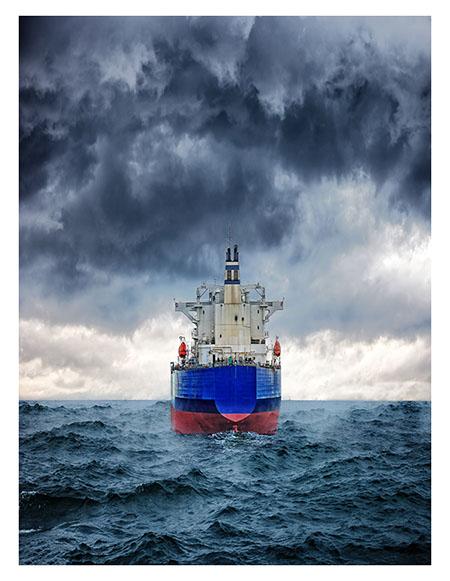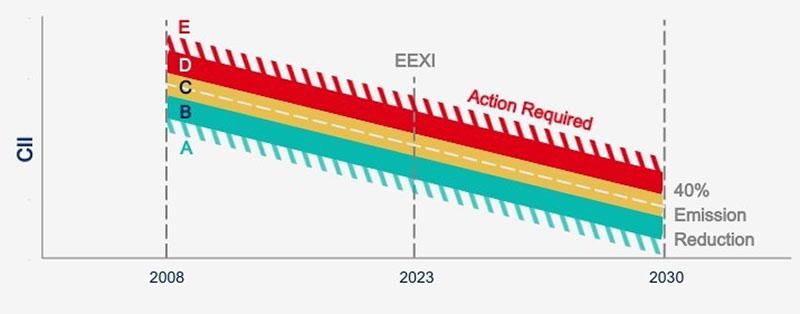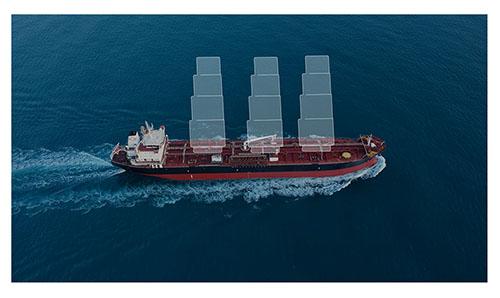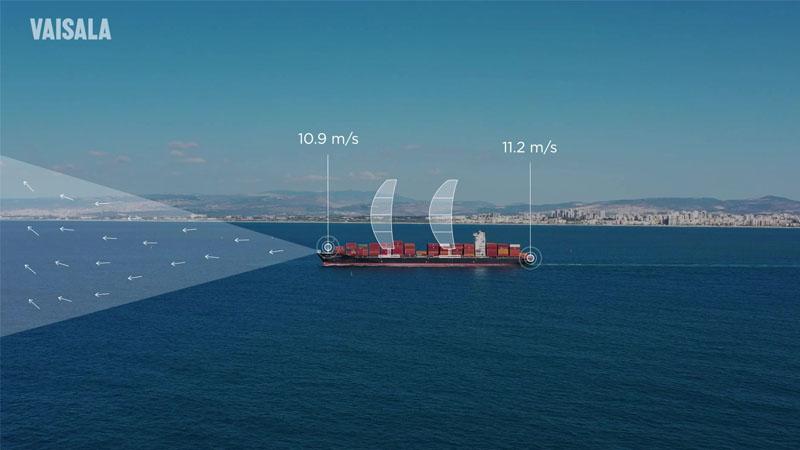On the journey to decarbonize the future of shipping
Shipping is a large and growing source of greenhouse gas emissions. Maritime transport emits around 920 million tons of CO2 annually and is responsible for about 2.5% of global greenhouse gas (GHG) emissions — and growing yearly. Currently, the shipping industry is working hard to reduce the carbon intensity of international shipping by 40% by 2030, and by 70% by 2050 according to the targets set by the International Maritime Organization (IMO).
Incoming regulations require compliance from ship owners and operators

The first set of international mandatory measures set by IMO to improve ships' energy efficiency was adopted over a decade ago on July 15, 2011 (Energy Efficiency Design Index (EEDI) for new ships, Ship Energy Efficiency Management Plan (SEEMP) for all ships), fundamentally changing the baseline for the incoming global fleet performance in terms of emission reduction. Since then, the base of regulatory work to address GHG emission from shipping has continued to actively support the global fight against climate change. (3)
In June 2021, IMO adopted key short-term measures aimed at cutting the carbon intensity of all ships by at least 40% by 2030, in line with the ambitions set out in the IMO Initial Strategy. These measures combine technical and operational approaches to improve the energy efficiency of ships. All ships will have to calculate their Energy Efficiency Existing Ship Index (EEXI), and ships over 5,000 GT will establish their annual operational carbon intensity indicator (CII), coming into effect January 1, 2023. (1)
The EEXI is a framework for determining the energy efficiency of in-service vessels over 400 GT that fall under MARPOL Annex VI. The EEXI requires ship operators to assess their ships’ energy consumption and CO2 emissions against specific requirements for energy efficiency for each vessel type. To do this, ship owners may need to implement technical measures to adjust their vessels’ emissions to the required level. The EEXI describes a vessel’s CO2 emissions, determining standardized CO2 emissions related to installed engine power, transport capacity and ship speed. Emissions are calculated based on the installed power of the main engine, fuel oil consumption, and a conversion factor between fuel and the corresponding CO2 mass. (2)
CII rating means in practice that ships will get a rating of their energy efficiency — A, B, C, D, E — where A is the best. This is the first time IMO has established a formal rating system for ships. This sends a strong signal to the market: Administrations, port authorities and other stakeholders as appropriate, are encouraged to provide incentives to ships rated as A or B. A ship rated D for three consecutive years, or E, is required to submit a corrective action plan, to show how the required index (C or above) would be achieved. (2)

Carbon Intensity Indicator (CII) evaluates the transport efficiency of vessels.
All merchant vessels in international trade, in practice, will need to adhere to these new requirements requiring them to make steps to decarbonize now.

Towards greener shipping with the help of wind
The shipping industry is looking hard to find new, innovative ways to decarbonize. The search begins with the use of alternative, renewable fuels, investments in energy efficiency and electrification, speed, hull and superstructure optimization as well as voyage optimization to new power and propulsion systems.
Wind-assisted ship propulsion (WASP) technology such as rotor sails and other types of mechanical sails are showing great promise as a viable source of clean propulsion. The technology can be retrofitted to ships in a matter of days, having substantial impact on the reduction of fuel consumption and emissions.
High quality, accurate and dependable wind sensing technology is critical to making the most of wind-assisted propulsion — not only for collecting the most wind, but also for optimizing power when the air is still. The addition of hyperlocal weather conditions makes it even easier to proactively manage the system for best performance.
Vaisala’s marine-proof ultrasonic wind sensors and lidars for remote wind measurements help ship operators to make the most of wind power. The sensors’ forecasting accuracy, durability and zero-maintenance design plus global customer support make sure that vessels always capture the best winds. Sensors can even help to protect systems in harsh weather with automatic start-and-stop functionality and emergency shut-downs.
Vaisala has long experience in developing the most accurate, reliable and dependable weather monitoring solutions. In addition to selected industries such as Maritime, we serve most of the World Meteorological Organizations with our weather products and services. Our reference-grade wind observation technologies including robust wind sensors, multi-parameter weather sensors, wind lidars for remote observations and forecasting services can be harnessed to support better performance and optimization of modern sailing technologies utilizing wind-assisted propulsion.
References:
1 "Cutting GHG emissions from shipping - 10 years of mandatory rules," IMO (International Maritime Organization), July 15, 2021
2 "EEXI AND CII: DUAL REGULATIONS REDUCING SHIP'S CARBON IMPACT," Bureau Veritas Marine & Offshore, May 3, 2021
3 "CII Calculation: Carbon Intensity Indicator Guide," ShipNerd News, June 28, 2022


